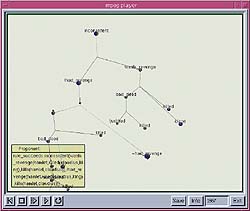
Figure 1: Dynamic mobilés for Hamlet's confiict.
1 Introduction
Ultima Ratio is a system for formal argumentation and visualization.
It allows one to specify an agent and the world it is situated in as an
extended logic program. Using argumentation, it is possible to detect and
remove conflicts the agents are facing. The modeling language allows two
forms of negation to express that a proposition is explicitly false and
is assumed false by default, respectively, it allows for integrity constraints
to characterize contradictory situations, and the definition of revisable
assumptions in order to remove the inconsistencies. We use Shakespeare's
Hamlet as a modelling example. Given the specification, Ultima Ratio unfolds
a process of argumentation in which arguments and counter-arguments are
exchanged to detect conflicts and remove them. Two kinds of arguments are
distinguished, attacks to the conclusion of an argument (rebut) and to
the premises of an argument (undercut), respectively. Besides the argumentation
engine, Ultima Ratio provides text, audio, and animated 3D output. The
visualization enables users to navigate through the argumentation space
and the argumentation process. It is based on the visual metaphor of mobilés
being dynamically constructed as the argumentation process evolves. The
argumentation engine is accessible on the internet .
2 Formalizing Human Argumentation
Argumentation semantics treats the evaluation of a logic program as an argumentation process, where a goal G holds if all arguments supporting G cannot be attacked anymore. Thus, logic programming is seen as a discourse involving attacking and counter-attacking arguments. Logic programming can be described in terms of two figures: Reductio ad absurdum- and groundattack [2] or equivalently rebut and undercut [3]. The former classifies an argument that leads to a contradiction under the current believes and arguments, and the latter an argument that falsifies the premise of one of the current arguments. Argumentation semantics in extended logic programming has been defined in [1, 3]. Our framework is based on [3] with a modification avoiding some unintuitive results [4]. Consider the excerpt of the third scene in the third act of Shakespeare's Hamlet below:
Hamlet is caught in a conflict. On the one hand he wants revenge
for his father being murdered. On the other he knows that having revenge
by killing Claudius, the murderer, is not possible since Claudius is praying
at that very moment and would go to heaven which contradicts the goal of
having revenge. The text can be formalized as follows:
In line 1, Hamlet realizes that Claudius is praying. This is represented
as a fact (a). In line 2, Hamlet continues that Claudius would go to heaven
if killed while praying. Formally, this is an instantiation of the general
rule (b). In line 3, Hamlet states that killing Claudius satisfies Hamlet's
desire for revenge. Or more general (c). In line 4, Hamlet starts another
line of thinking by mentioning the fact that Claudius killed Hamlet's father,
the king (d). In line 7, Hamlet finds that he does not have revenge if
he sends Claudius to heaven (e). Beside this direct translation of Hamlet's
monologue to logic, we have to add further facts and rules which are mentioned
throughout the scenes before or which are given implicitly. First of all,
we need a rule to express when someone wants revenge (f). I.e. X wants
to take revenge on Y if Y killed a person Z being close to X, and the killing
is not justified. Left implicitly in the piece is the fact that Hamlet
and his father are close to each other (g). To specify conflicting goals
we use besides facts and rules integrity constraints. In this scene we
state formally that it is contradictory to want to take revenge and not
have it (h). Finally, we have to specify the assumptions Hamlet is willing
to change to solve conflicts. For this scene, Hamlet adopts the default
assumption of not killing Claudius. I.e. (i) states that Hamlet killing
Claudius is assumed false initially, but may be changed in the course of
argumentation.
3 Functionality
The core of the system is the argumentation engine whose output is transformed for the text and audio output as well as the 3D animation. The user controls the engine using an internet interface. The user selects

Figure 1: Dynamic mobilés for Hamlet's confiict.
4 Visualizing the Argumentation Process
For visualization we consider four events: an argument is proposed, accepted, being attacked, or defeated. If an argument is being proposed, its visualization reveals the uncertainty of its future. During its foundation by other arguments it gains visual stability. If it is being accepted, its visual representation changes to indicate that there has been an agreement about this argument. During the execution of the logic program, an argument can be attacked in two ways (undercut and rebut). In our visualization we use different metaphors for each of the attacks to communicate the formal difference between both types visually. If an undercut occurs, the defeated argument collapses in the scene which is interpreted as being built on a wrong premise. A rebut is a direct attack on the conclusion of an argument, i.e. the second argument neutralize the first one.
Acknowledgment We'd like to thank Bela Bargel and Joachim Böttger
for our discussions and for their support in implementing the visualization
and Iara Móra and Gerd Wagner for their comments. Thanks also to
BT for generous support of the project.
References
[1] P. M. Dung. An argumentation semantics for logic programming with
explicit negation. In Proc. of the 10th International Conference on Logic
Programming, pages 616-630. MIT Press, 1993.
[2] P. M. Dung. On the acceptability of arguments and its fundamental
role in nonmonotonic reasoning, logic programming and n-person games. Artificial
Intelligence, 77(2):321-357,1995.
[3] Henry Prakken and Giovanni Sartor. Argument-based extended logic
programming with defeasible priorities. Journal of Applied Non-Classical
Logics, 1997.
[4] Michael Schroeder, Iara Móra, and José Julio Alferes.
Vivid agents arguing about distributed extended logic programs. In Proceedings
of the Portuguese Conference on Artificial Intelligence EPIA97. LNAI 1323,
Springer-Verlag, 1997.